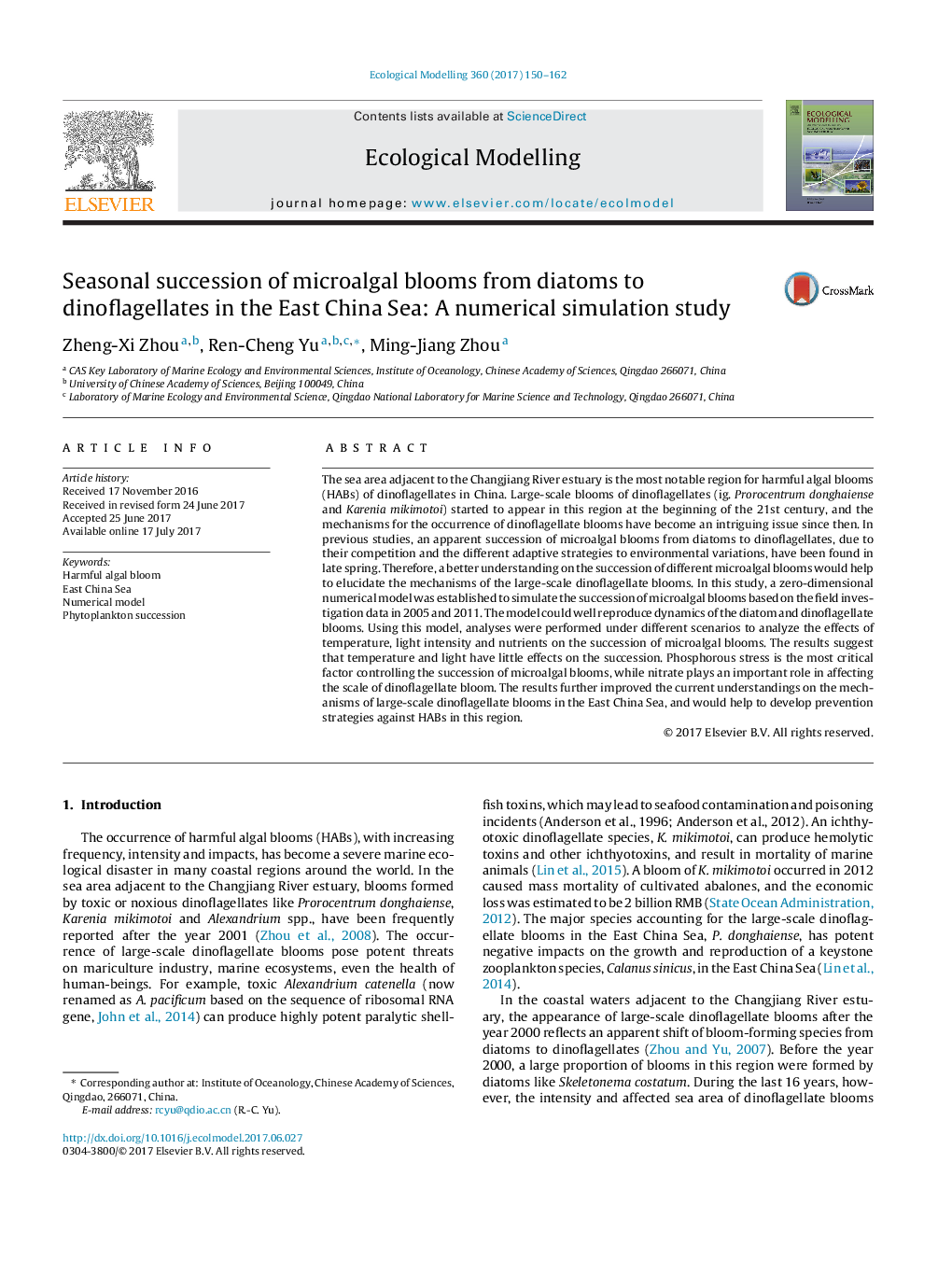| Article ID | Journal | Published Year | Pages | File Type |
|---|---|---|---|---|
| 5742055 | Ecological Modelling | 2017 | 13 Pages |
â¢East China Sea (ECS) is a notable region for large-scale dinoflagellate blooms in China.â¢A numerical model was established to simulate the succession of microalgal blooms from diatoms to dinoflagellates in ECS.â¢The model could well reproduce the succession process of different microalgal blooms.â¢Phosphorus stress is critical for the succession of microalgal blooms from diatoms to dinoflagellates.â¢Nitrate is important for the maintenance of dinoflagellate bloom.
The sea area adjacent to the Changjiang River estuary is the most notable region for harmful algal blooms (HABs) of dinoflagellates in China. Large-scale blooms of dinoflagellates (ig. Prorocentrum donghaiense and Karenia mikimotoi) started to appear in this region at the beginning of the 21st century, and the mechanisms for the occurrence of dinoflagellate blooms have become an intriguing issue since then. In previous studies, an apparent succession of microalgal blooms from diatoms to dinoflagellates, due to their competition and the different adaptive strategies to environmental variations, have been found in late spring. Therefore, a better understanding on the succession of different microalgal blooms would help to elucidate the mechanisms of the large-scale dinoflagellate blooms. In this study, a zero-dimensional numerical model was established to simulate the succession of microalgal blooms based on the field investigation data in 2005 and 2011. The model could well reproduce dynamics of the diatom and dinoflagellate blooms. Using this model, analyses were performed under different scenarios to analyze the effects of temperature, light intensity and nutrients on the succession of microalgal blooms. The results suggest that temperature and light have little effects on the succession. Phosphorous stress is the most critical factor controlling the succession of microalgal blooms, while nitrate plays an important role in affecting the scale of dinoflagellate bloom. The results further improved the current understandings on the mechanisms of large-scale dinoflagellate blooms in the East China Sea, and would help to develop prevention strategies against HABs in this region.
